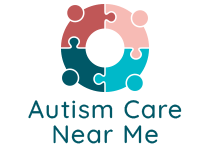What is ABA therapy? Applied behavior analysis – or ABA for short – is often considered to be the “gold standard” of autism spectrum disorder treatment programs. This therapy seeks to help autistic children improve social, developmental, and learning skills through positive reinforcement. It also helps medical professionals understand how behavior works and how it applies to real-life situations.
What is ABA Therapy and How Does It Work?
ABA therapy is a flexible program that can adapt to a child’s specific needs or environment. Professionals can administer ABA therapy almost anywhere, ranging from schools to community centers. In-home ABA therapy programs are especially useful because they allow children to learn in a comfortable and familiar environment. Such programs can also teach children to perform basic routines such as getting dressed or using the bathroom.
Specific treatments vary from child to child, so it’s crucial to customize such therapy based on a patient’s needs.
The first step is to seek a functional behavior assessment with a therapist. The therapist will ask questions about your child’s behavior and difficulties they need to overcome. They’ll spend time with your child and observe their activities in school and home settings.
Then, your therapist should develop a plan with specific goals in mind. They’ll determine which behaviors they want to reinforce and discourage.
Autism Therapy Programs
ABA therapy follows a three-step “A-B-C’s” guideline:
Antecedent: An antecedent happens before the target behavior. It might be a physical object, verbal command, or an internal thought or feeling.
Behavior: This is how the child responds to the antecedent. The child might have a positive or negative response or none at all.
Consequence: The consequence largely depends on how the therapist intends to reward or punish the child’s behavior. If the child displayed the desired action, they might get a compliment or some other prize. If the child reacted in an undesirable way, they may receive correction or simply receive no reward.
For example, perhaps the therapist is trying to have the child correctly identify images on a flashcard. If the child correctly identifies all the photos, the therapist might give them a sticker or say “good job.” If they don’t, the child receives no reward.
Many professionals also use ABA therapy and similar techniques like medication management for autism spectrum disorder. These therapeutic interventions can treat anger issues, dementia, substance abuse, eating disorders, anxiety-related conditions, and more.
What is the Controversy Surrounding ABA Therapy?
Behavioral psychologist Dr. Ivar Lovaas helped establish what is ABA therapy back in 1987 at UCLA’s Psychology Department. He believed that ABA therapy could help change or even terminate an autistic child’s unwanted behaviors.
The main reason that his practices were so controversial is that he applied punishments for children who didn’t display the correct behavior. His penalties were often very harsh, and many found them to be dehumanizing. He sought to make children “neurotypical” or “normal” – something which is fundamentally impossible.
While much of the therapy remains the same, modern-day professionals no longer employ harsh punishments. Rather, they withhold rewards instead of punishing the child. For example, an older therapist might’ve bitterly reprimanded a child for not cleaning up their toys. A modern therapist would simply tell the child they can’t receive their favorite meal or play their video game if they don’t clean up.
How Can I Get Support for My Child?
If you now understand, “What is ABA therapy?” you can ask, “How can I get ABA therapy for my child?” First, you should get a diagnosis from a medical professional. Then, you can seek a therapist who provides ABA therapy programs. Ask your child’s pediatrician or doctor for recommendations. Such therapy can be hugely beneficial to children on the autism spectrum. Find a therapy program today.







